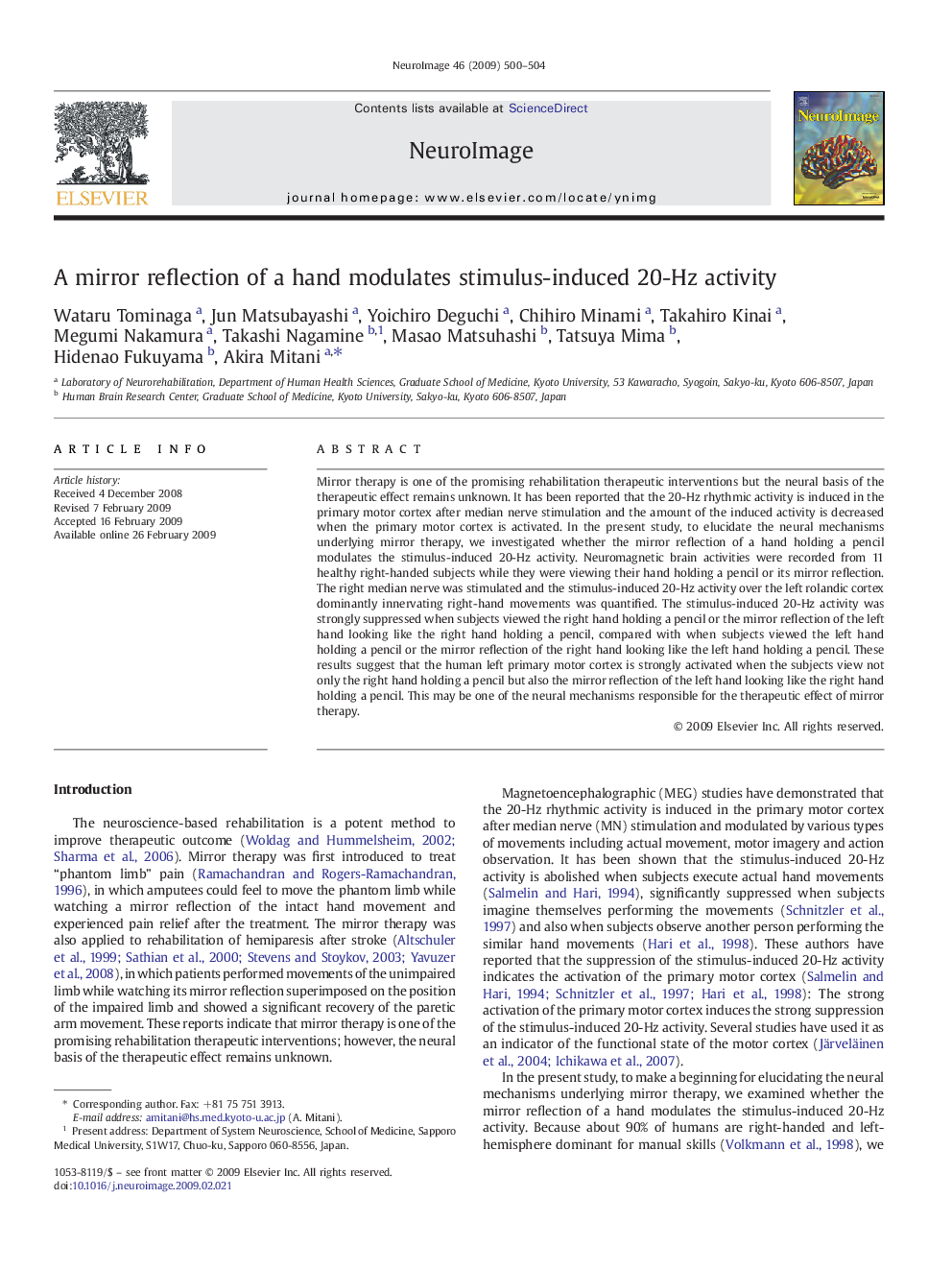| Article ID | Journal | Published Year | Pages | File Type |
|---|---|---|---|---|
| 6038293 | NeuroImage | 2009 | 5 Pages |
Abstract
Mirror therapy is one of the promising rehabilitation therapeutic interventions but the neural basis of the therapeutic effect remains unknown. It has been reported that the 20-Hz rhythmic activity is induced in the primary motor cortex after median nerve stimulation and the amount of the induced activity is decreased when the primary motor cortex is activated. In the present study, to elucidate the neural mechanisms underlying mirror therapy, we investigated whether the mirror reflection of a hand holding a pencil modulates the stimulus-induced 20-Hz activity. Neuromagnetic brain activities were recorded from 11 healthy right-handed subjects while they were viewing their hand holding a pencil or its mirror reflection. The right median nerve was stimulated and the stimulus-induced 20-Hz activity over the left rolandic cortex dominantly innervating right-hand movements was quantified. The stimulus-induced 20-Hz activity was strongly suppressed when subjects viewed the right hand holding a pencil or the mirror reflection of the left hand looking like the right hand holding a pencil, compared with when subjects viewed the left hand holding a pencil or the mirror reflection of the right hand looking like the left hand holding a pencil. These results suggest that the human left primary motor cortex is strongly activated when the subjects view not only the right hand holding a pencil but also the mirror reflection of the left hand looking like the right hand holding a pencil. This may be one of the neural mechanisms responsible for the therapeutic effect of mirror therapy.
Related Topics
Life Sciences
Neuroscience
Cognitive Neuroscience
Authors
Wataru Tominaga, Jun Matsubayashi, Yoichiro Deguchi, Chihiro Minami, Takahiro Kinai, Megumi Nakamura, Takashi Nagamine, Masao Matsuhashi, Tatsuya Mima, Hidenao Fukuyama, Akira Mitani,
